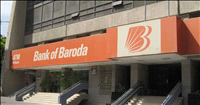Researchers develop new method of controlling tiny devices
By By Bill Kisliuk | 27 Feb 2013
Electromagnetic devices, from power drills to smart-phones, require an electric current to create the magnetic fields that allow them to function. But with smaller devices, efficiently delivering a current to create magnetic fields becomes more difficult.
In a discovery that could lead to big changes in storing digital information and powering motors in small hand-held devices, researchers at UCLA have developed a method for switching tiny magnetic fields on and off with an electric field - a sharp departure from the traditional approach of running a current through a wire.
The researchers, affiliated with the university's National Science Foundation-funded 'translational applications of nanoscale multiferroic systems' (TANMS), developed a composite that can control magneto-electric activity at a scale of about 10 nanometers, some 1,000 times smaller than a red blood cell. Previously, the instability of magnetic particles at this scale made it impossible to control their movement, much less the energy reaching them.
The team used a composite of nickel nano crystals coupled with a single crystal of piezoelectric material, which can generate power when a small amount of force is applied to it, to control the north-south orientation of the particles as well as their tendency to spin around, which are essential aspects of activating or deactivating a magnetic field.
The findings could potentially change the way electromagnetic devices are designed in the future. With further research, the team said, the discovery may allow significant miniaturisation of equipment ranging from memory devices and antennas to instruments used to analyse blood.
The researchers noted that while their findings represent a major scientific step, practical applications of the discovery are likely to be years away.
The study's lead authors are Hyungsuk K.D. Kim, a recent Ph.D. graduate from the materials science and engineering department at UCLA Engineering, and doctoral candidate Laura T. Schelhas of UCLA's chemistry and biochemistry department.
The team was led by Gregory P. Carman, a professor of mechanical and aerospace engineering at UCLA Engineering and director of TANMS, and Sarah H. Tolbert, a UCLA professor of chemistry and biochemistry. Carman and Tolbert are members of the California NanoSystems Institute at UCLA.


















.jpg)










